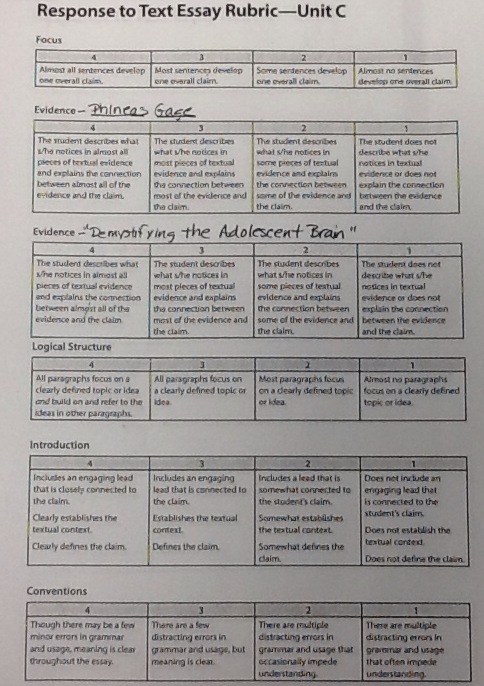Key Skills we'll be practicing...Read with accuracy
- Select and connect the correct information - Understand Synthesize - Apply information to form a whole understanding - Bring together information from multiple sources Use of Evidence - Select and describe - Explain the significance Questions about the brain...How does our brain make us who we are?
What do we learn from our mistakes? What can we learn when we put our brains together? |
The Mazur Technique1. Independently, students answer a factual question. ("Where did the blasting process go wrong?)
2. Projection shows students the range of answers in the class. The teacher does not give students the correct answer yet. 3. Students pair with students how have different answers, reconsider their answers while looking back at the text, and come to a common answer with partners. 4. The teacher shows students the range of answers again, and this time gives students the correct answer. 5. The teacher leads a discussion about where students found the correct answer in the text and which parts of the text led to incorrect answers and misunderstandings. |
The essay prompt we will be answering...
Our Rubric for the Final Polished Piece - subject to change each year
The Quest
1. Student "takes on" the symptoms of someone with a particular brain condition or injury.
2. Student goes through a series of experiences as though he/she is presenting these symptoms.
3. Students read/ watch case studies of real patients with these similar symptoms.
4. Students synthesize their experiences with information from the case studies to diagnose their brain injury or condition.
5. Students each present their "partial" version of an experience to come to an accurate understanding of this experience.
2. Student goes through a series of experiences as though he/she is presenting these symptoms.
3. Students read/ watch case studies of real patients with these similar symptoms.
4. Students synthesize their experiences with information from the case studies to diagnose their brain injury or condition.
5. Students each present their "partial" version of an experience to come to an accurate understanding of this experience.
Find help on the Amplify website! |
What does it mean to be human? |
|
OLD INFO...
Go to this site: https://learningresources.amplify.com Username: tm_student Password: AmplifyELA Click on "ELA for Students" Click on "Unit C - Multimedia" |
|


